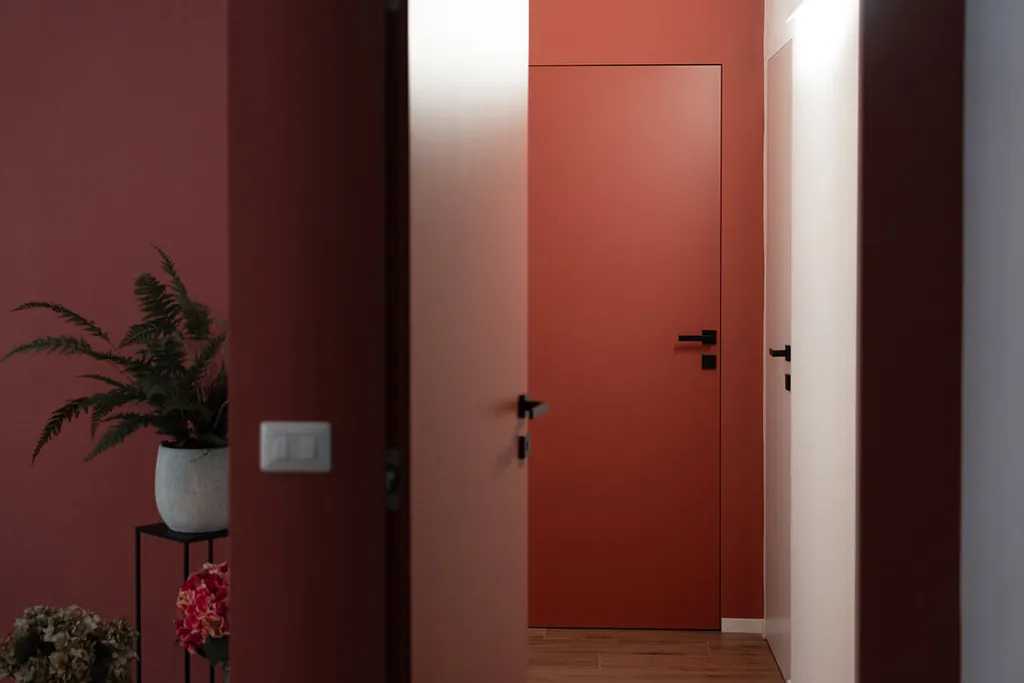Hey there, design adventurers! Ready to delve into the world of seamless transitions and unexpected reveals? Today, we’re talking about doors that go beyond their basic function – hidden sliding doors, frameless doors, and the elusive invisible door. These aren’t just about moving from one room to another; they’re about creating a sense of flow, mystery, and sophisticated design that often leaves guests wondering, “Wait, where did that go?” Let’s unlock the secrets behind these captivating entryways.
The Magic of Hidden Sliding Doors
Imagine a door that disappears seamlessly into the wall, creating a completely open and unobstructed passage. That’s the beauty of a hidden sliding door. These doors, also known as pocket doors, slide into a cavity within the wall when opened, making them an incredible space-saving solution and a fantastic way to create a flexible floor plan.
Hidden sliding doors are perfect for connecting living areas, dining rooms, or even en-suite bathrooms. When open, they offer a wide, continuous space, ideal for entertaining or simply enjoying an open flow. When closed, they provide privacy and clearly define the separate areas. The lack of a swinging door also means you don’t have to account for swing space, which can be a game-changer in smaller homes or tight layouts. The effect is clean, modern, and almost magical in its disappearance.
The Understated Elegance of Frameless Doors
Frameless doors take the concept of seamlessness a step further by eliminating the traditional door frame. The door slab itself becomes the focus, creating a clean, minimalist aesthetic. Often paired with concealed hinges, frameless doors appear to float within the doorway, contributing to a sleek and contemporary look.
These doors are all about subtle sophistication. They blend effortlessly with the surrounding walls, creating a sense of continuity and visual calm. Frameless doors work particularly well in modern and minimalist interiors where clean lines and uncluttered spaces are key. They can be finished in a variety of materials and colors, allowing them to either blend completely with the walls for a truly integrated look or stand out as a subtle yet elegant feature. The lack of a visible frame emphasizes the quality and finish of the door itself.
Unveiling the Mystery of the Invisible Door
Now, let’s talk about the ultimate in discreet design – the invisible door. These doors are designed to be virtually indistinguishable from the surrounding wall when closed. This is often achieved through a combination of frameless construction, concealed hinges, and a finish that matches the adjacent wall. Think seamless drywall or perfectly aligned paneling that suddenly reveals an entryway.
Invisible doors are fantastic for creating secret rooms, hidden storage, or simply maintaining a clean and uninterrupted wall surface. Imagine a bookshelf that pivots to reveal a hidden study or a paneled wall that seamlessly opens into a walk-in closet. The effect is both surprising and incredibly sophisticated. Achieving this level of integration requires meticulous installation and attention to detail, ensuring perfect alignment and a flawless finish. The result, however, is a design element that truly elevates the sense of intrigue and thoughtful design within a space.
Incorporating Seamless Doors into Your Home
Integrating hidden, frameless, or invisible doors requires careful planning and consideration:
- Structural Considerations: Hidden sliding doors require sufficient wall cavity space for installation. Frameless and invisible doors need precise measurements and often specialized hardware.
- Finishes and Materials: To achieve a truly invisible look, the door finish must perfectly match the surrounding wall. This might involve using the same paint, wallpaper, or paneling.
- Hardware: Concealed hinges are essential for both frameless and invisible doors. For hidden sliding doors, choose hardware that is both functional and discreet.
- Professional Installation: Due to the precision required, it’s often best to have these types of doors professionally installed to ensure smooth operation and a flawless finish.
The payoff, however, is a design that feels intentional, sophisticated, and often a little bit magical. These seamless door solutions can transform the way you experience your home, creating a sense of flow, surprise, and understated elegance.
Conclusion
Seamless doors demand precision in structure, finishes, and hardware, often requiring professional installation for a flawless, sophisticated result. The reward is an intentional, elegant, and often magical home flow. Ready to elevate your space? At Doors Delivered our expert design and installation services ensure your seamless door vision becomes a stunning reality. Contact us today!
Frequently Asked Questions (FAQs) – Hidden Sliding Door, Frameless Doors, Invisible Door
1.Are hidden sliding doors noisy to operate?
Modern hidden sliding door hardware is designed for smooth and quiet operation. Look for systems with soft-close mechanisms to further minimize noise.
2.Are frameless doors less soundproof than traditional doors?
The soundproofing capabilities of a frameless door depend on its construction and seals. While the lack of a frame might suggest less insulation, well-designed frameless doors with proper seals can offer comparable sound insulation to traditional doors.
3.How do you open an invisible door?
Invisible doors can be opened in various ways, from simple push-to-open mechanisms to concealed handles or even touch-activated systems. The goal is to keep the opening mechanism as discreet as possible.
4.Are these types of doors more expensive than standard doors?
Generally, hidden sliding doors, frameless doors, and especially invisible doors tend to be more expensive than standard doors due to the specialized hardware, precise installation requirements, and often custom finishes.
5.Can I retrofit a hidden sliding door into an existing wall?
Retrofitting a hidden sliding door can be challenging and often requires significant structural modifications to the wall. It’s usually easier to incorporate them during new construction or a major renovation.
